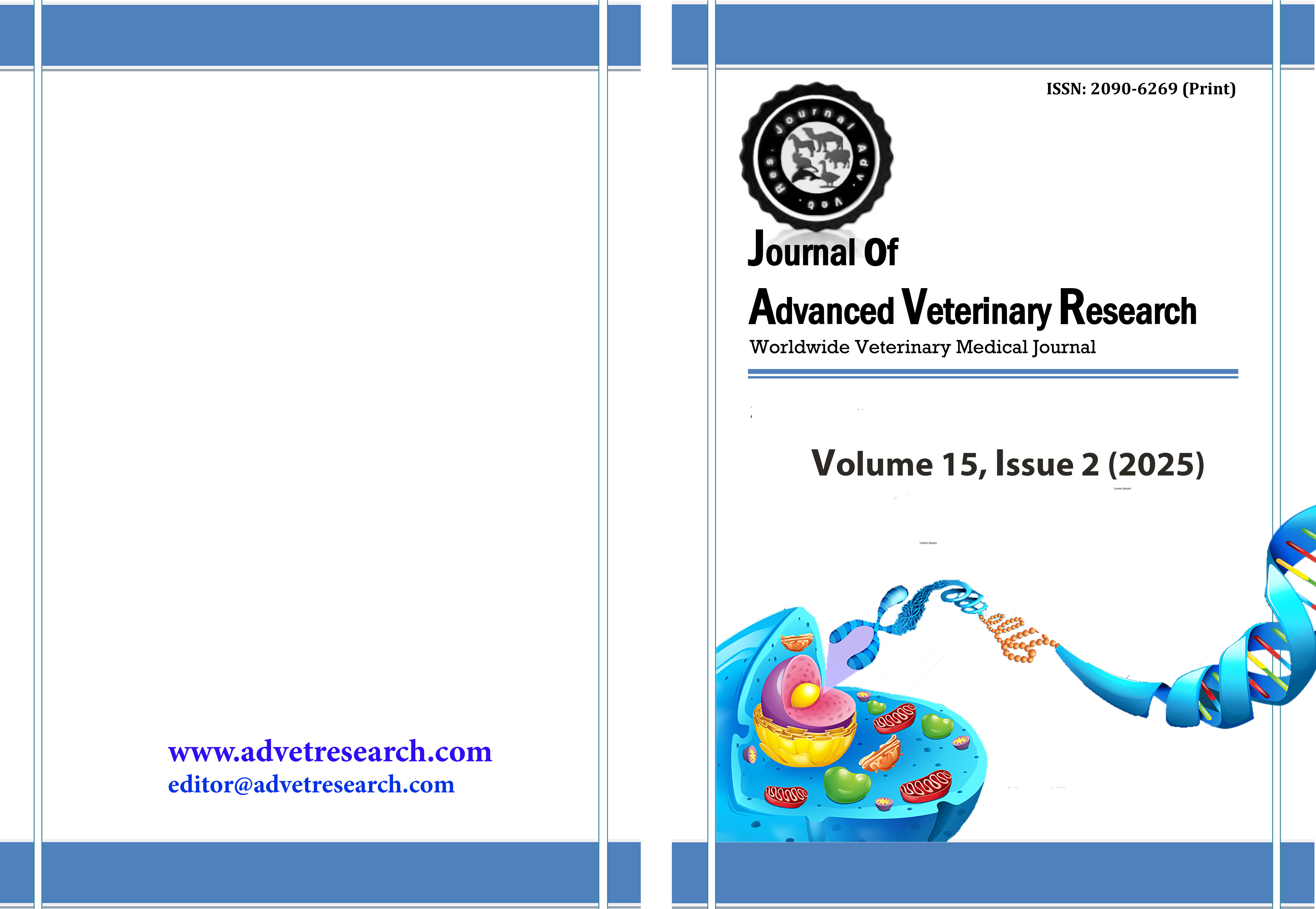Influence of biologically treated jojoba meal with or without Alpinia galanga on growth performance and blood profile of weanling rabbits in North Sinai, Egypt
https://doi.org/10.5281/zenodo.15198536
Keywords:
Rabbits, Jojoba meal, Lactobacillus acidophilus, Alpinia galanga, Growth performanceAbstract
The purpose of this work was to assess the utilization of biologically treated jojoba meal without or with Alpinia galanga as a protein source in weanling rabbits' feed. Thirty weaned New Zealand white (NZW) rabbits, aged 35 days and weighed 653.0±45.03 g, were assigned at random to three treatment groups (10/group). Experimental groups were as follows: the 1st group: Basal diet (CON), the 2nd group: Basal diet containing 10% treated jojoba meal (JML; substituted 40% of the soybean protein) and the 3rd group: Basal diet containing 10% treated jojoba meal and 0.25% Alpinia galanga (JMLA). At the finish of the experiment duration, four rabbits were randomly picked from each group and slaughtered to examine carcass features and blood characteristics. Results indicated that replacement of 40% soybean protein by protein of biologically treated jojoba meal without or with Alpinia galanga did not affect growth performance such as live body weight (LBW), total weight gain (TWG), daily weight gain (DWG), total and daily feed intake (TFI and DFI), feed conversion ratio (FCR), relative growth weight (RGW) and performance index (PI) at different ages (5-13 weeks age). Viability (%) was 100% for all treatment groups. Results indicated no discernible variations in blood parameters or carcass features among treatment groups. It could be concluded that the weanling rabbits' growth performance and health are unaffected using biologically processed jojoba meal without or with Alpinia galanga as a partial substitute for soybean meal protein.
Downloads
Published
How to Cite
Issue
Section
License
Copyright (c) 2025 Journal of Advanced Veterinary Research

This work is licensed under a Creative Commons Attribution-NonCommercial-NoDerivatives 4.0 International License.
Users have the right to read, download, copy, distribute, print, search, or link to the full texts of articles under the following conditions: Creative Commons Attribution-NonCommercial-NoDerivatives 4.0 International (CC BY-NC-ND 4.0).
Attribution-NonCommercial-NoDerivs
CC BY-NC-ND
This work is licensed under a Creative Commons Attribution-NonCommercial-NoDerivatives 4.0 International (CC BY-NC-ND 4.0) license




